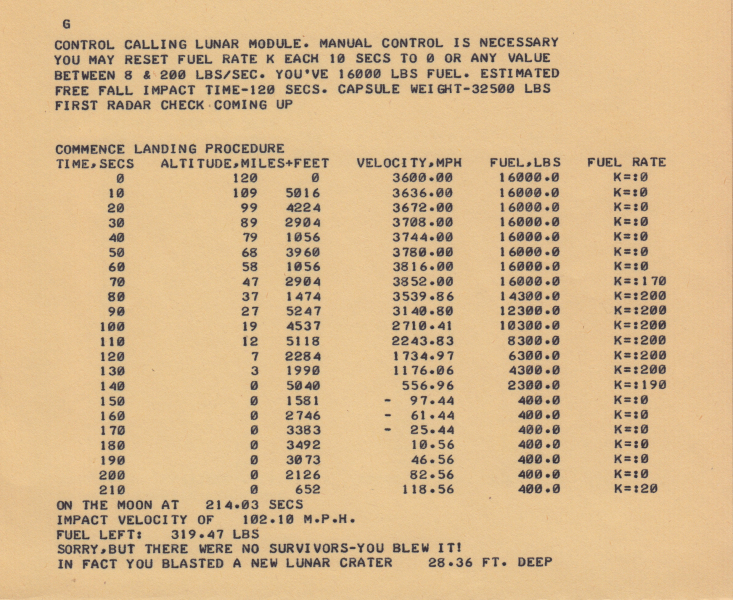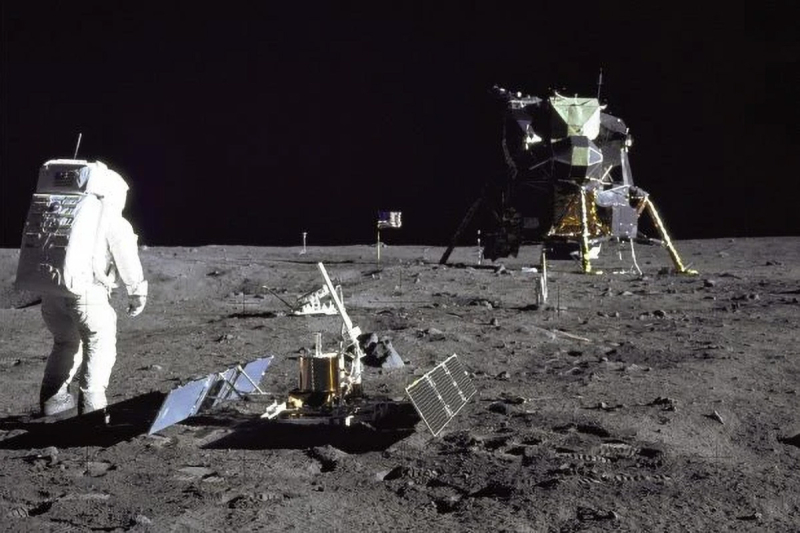The Games section is published with the support of?


The Technology section is published with the support of Favbet Tech


Retired programmer Martin K. Martin discovered a bug in the original physics code of the 1969 computer game Lunar Lander. Created by then 17-year-old high school student Jim Storer, this “proto-game” outputted only text-based status updates on a teletype machine. In fact, the game is a space simulator.
The legendary game Storer developed on a PDP-8 computer using the FOCAL programming language just months after Neil Armstrong and Buzz Aldrin landed on the moon. The game allows you to control the descent of the module to the surface of the Moon. Players must carefully manage their fuel usage to achieve a soft landing, making important decisions every ten seconds to ensure they use the right amount of fuel.

This is the “graphony” that was in the first version of Lunar Lander. This is not Unreal Engine 5.4.
In 2009, shortly before the 40th anniversary of the first moon landing, Benj Edwards of Ars Technica decided to find the author of Lunar Lander, which was then known mainly as a graphic game thanks to the 1974 version and the 1979 arcade game for Atari. He discovered that Jim Storer had created the oldest known version as a teletype game, interviewed him, and wrote a history of the game. Storer later published the source code for the original game.
In 2024, Martin K. Martin, an artificial intelligence expert, game developer, and former MIT graduate student, stumbled upon a bug in Storer's code while researching the optimal landing strategy for a module that maximizes fuel efficiency. The optimal method involves free-falling to gain speed, then igniting the engines at the last possible moment to slow down for safe contact with the surface.
“I recently researched the optimal fuel burn schedule to land as smoothly as possible with the maximum amount of fuel remaining. Surprisingly, the theoretically best strategy did not work. The game mistakenly thinks that the lander is not touching the surface when in fact it is. As I delved deeper, I was amazed by the complex physics and calculations in the game. I finally found a bug: a missing division by two that had gone undetected for almost 55 years,” Martin wrote on his blog.
Despite the mistake, Martin was amazed that Storer, then a high school senior, managed to incorporate advanced mathematical concepts into his game, an achievement that remains exceptional even by modern standards. Martin reached out to Storera for comment, and the Lunar Lander author said his physicist father helped him derive the equations used in the simulation.
Online intensive “Analytics Bootcamp” by robot_dreams. Get started verifying and analyzing data and identifying key metrics that are appropriate for your product. Use SQL to analyze data and visualize it in Tableau. Join
Errors in games do not always prevent you from enjoying them. But, fortunately for astronauts Aldrin and Armstrong, the actual Apollo landing on the Moon was calculated without such an error.
The Games section is published with the support of?


LG Home Entertainment is a recognized innovator in television and audio video systems. LG offers an enhanced home entertainment experience with award-winning OLED and QNED LED TVs powered by the innovative WebOS Smart TV platform. Committed to providing consumers with a premium user experience, all LG home entertainment products are designed with sustainability in mind, from production to disposal.
Technology Section is powered by Favbet Tech


Favbet Tech is IT a company with 100% Ukrainian DNA, which creates perfect services for iGaming and Betting using advanced technologies and provides access to them. Favbet Tech develops innovative software through a complex multi-component platform that can withstand enormous loads and create a unique experience for players. The IT company is part of the FAVBET group of companies.

